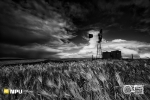

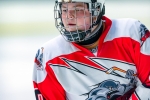



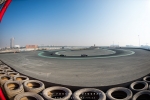
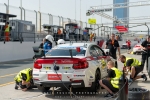
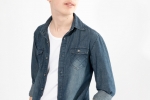
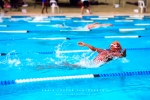

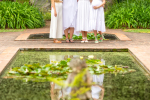

What makes a Rolleiflex TLR so special? Many things. To start, TLR stands for twin lens reflex. “Twin” because there are two lenses. And reflex means that the photographer looks through the lens to view the reflected image of an object or scene on the focusing screen. Photographers also look through SLRs, or single lens reflex cameras. One of the differences between the two is that the SLR is held at eye level, and the TLR is held at chest level while the photographer looks through a “waist-level” finder. Another difference is that most SLRs are oriented a horizontal format and must be rotated to shoot vertically. TLRs, however, are 6 x 6 cm square format cameras, so if a photographer wants a horizontal or vertical photo, they will shoot square and crop later. Since a 6 x 6 cm square is roughly three times larger than a 35mm film image, little is lost in terms of detail from cropping. That withstanding, most people are drawn to TLRs because they love shooting with a square format camera, and find it fun.
Photos by Dan Wagner
The advantages of shooting from the waist, or more accurately, the solar plexus, is that people will look more “heroic” as the horizon line and related background areas behind a subject will be shifted higher. And for seasoned photographers, shooting from a new perspective can be liberating and inspiring.
 |
Besides being fun to use, watching someone shoot with a Rolleiflex TLR for the first time is comical, as the mirror reverses the viewfinder image from left to right, frequently causing the photographer to point the camera the wrong way. This is because when one moves the camera to the right or left, the subject seems to move in the opposite direction. It’s also difficult, at first, to hold the camera level. Fortunately, with a little practice, both of these issues are easily overcome. In the case of a Rolleiflex TLR, you look through the upper or “viewing” lens. The lower lens, which is referred to as the “taking” lens, is situated in front of the film plane, and is the lens that captures the image. Inside this lens are the shutter and aperture blades. Unlike an SLR camera, the TLR has a stationary mirror, not a moving one. The absence of a moving mirror has the advantage of lower vibration for slower handheld shooting and a viewfinder that doesn’t go dark during the moment of exposure. By allowing the photographer to view a subject the instant the image is recorded, the photographer will know if the desired image has been captured. It’s also quieter than the sound of an SLR firing.Rolleiflex TLR Cameras Are Built SolidlyA major appeal of Rolleiflex TLR cameras is that they are so well made. Constructed primarily of metal and glass and covered with a luxurious leather skin, Rolleiflex cameras are solid, and feel good in the hands. The precise manner in which parts fit together speaks to exacting craftsmanship. And it’s this manufacturing skill that makes a 50-year-old Rolleiflex feel relevant and demand to be picked up, appreciated, and used. The worst fate for any camera, let alone a Rolleiflex, is to become a dusty shelf queen. One example of how well-designed these cameras are would be the fit of the removable film door. On vintage cameras manufactured to less demanding tolerances, black foam inserts were used to keep film doors light-tight. But on Rolleiflexes, the film door fits so precisely that there is no need for foam liners—the metal-on-metal fabrication alone assures that the door remains light-tight.Purchasing A Used Rolleiflex TLRThere are numerous concerns and things to look for when buying a used Rolleiflex TLR. Because the first Rolleiflex was introduced in 1929, and the popular 2.8f and 3.5f models were made more than 50 years ago, finding one in pristine condition can be difficult. The most important consideration is the condition of the lenses, especially the lower taking lens. Scratches, which some sellers will describe as cleaning marks, fungus, excessive interior dust particles sometimes described as haze, and balsam separation of lens elements from aging cement, are the main problems to look for.Other factors, while not necessarily deal breakers, are also important. These factors include the presence of oil on the aperture blades, transport mechanism gearing problems, alignment of metal bellows, shutter speed accuracy, and more. Odds are that the camera you purchase will need a cleaning, lubrication, and adjustment (CLA). The main reason for this is that most cameras, especially vintage cameras such as the Rolleiflex TLR, were engineered with the expectation that they would be serviced at regular intervals. In addition, lubricating oils were never meant to last a lifetime, and over time will become sticky and impede camera functions. Simply leaving a camera in a hot car for too long can break down the lubricants and cause problems. Therefore, buyers should be prepared to spend an additional $300 or more to have their newly purchased camera serviced. Photography-related sites with for sale/wanted forums, eBay, and camera shops with used departments, such as the Used Department at B&H, are good places to find your Rolleiflex.When buying a Rolleiflex TLR:
In the case of a Rolleiflex TLR, you look through the upper or “viewing” lens. The lower lens, which is referred to as the “taking” lens, is situated in front of the film plane, and is the lens that captures the image. Inside this lens are the shutter and aperture blades. Unlike an SLR camera, the TLR has a stationary mirror, not a moving one. The absence of a moving mirror has the advantage of lower vibration for slower handheld shooting and a viewfinder that doesn’t go dark during the moment of exposure. By allowing the photographer to view a subject the instant the image is recorded, the photographer will know if the desired image has been captured. It’s also quieter than the sound of an SLR firing.Rolleiflex TLR Cameras Are Built SolidlyA major appeal of Rolleiflex TLR cameras is that they are so well made. Constructed primarily of metal and glass and covered with a luxurious leather skin, Rolleiflex cameras are solid, and feel good in the hands. The precise manner in which parts fit together speaks to exacting craftsmanship. And it’s this manufacturing skill that makes a 50-year-old Rolleiflex feel relevant and demand to be picked up, appreciated, and used. The worst fate for any camera, let alone a Rolleiflex, is to become a dusty shelf queen. One example of how well-designed these cameras are would be the fit of the removable film door. On vintage cameras manufactured to less demanding tolerances, black foam inserts were used to keep film doors light-tight. But on Rolleiflexes, the film door fits so precisely that there is no need for foam liners—the metal-on-metal fabrication alone assures that the door remains light-tight.Purchasing A Used Rolleiflex TLRThere are numerous concerns and things to look for when buying a used Rolleiflex TLR. Because the first Rolleiflex was introduced in 1929, and the popular 2.8f and 3.5f models were made more than 50 years ago, finding one in pristine condition can be difficult. The most important consideration is the condition of the lenses, especially the lower taking lens. Scratches, which some sellers will describe as cleaning marks, fungus, excessive interior dust particles sometimes described as haze, and balsam separation of lens elements from aging cement, are the main problems to look for.Other factors, while not necessarily deal breakers, are also important. These factors include the presence of oil on the aperture blades, transport mechanism gearing problems, alignment of metal bellows, shutter speed accuracy, and more. Odds are that the camera you purchase will need a cleaning, lubrication, and adjustment (CLA). The main reason for this is that most cameras, especially vintage cameras such as the Rolleiflex TLR, were engineered with the expectation that they would be serviced at regular intervals. In addition, lubricating oils were never meant to last a lifetime, and over time will become sticky and impede camera functions. Simply leaving a camera in a hot car for too long can break down the lubricants and cause problems. Therefore, buyers should be prepared to spend an additional $300 or more to have their newly purchased camera serviced. Photography-related sites with for sale/wanted forums, eBay, and camera shops with used departments, such as the Used Department at B&H, are good places to find your Rolleiflex.When buying a Rolleiflex TLR:
Properly functioning Rolleiflex 2.8f cameras generally sell for between $900 and $1,500, with finer examples commanding a premium. 3.5f models can run about $200 less. Both lenses come in single-coated Planar and Xenotar versions and produce sharp photos with beautiful rendering. Models referred to as “white face” have serial numbers printed on the silver metal bordering the lenses to the right of the taking lens. Because white face cameras represent the final f-model run, and are 10 years or so newer, they go for the highest prices, which often exceed $2,500. When deciding between a 2.8f versus 3.5f and white face versus non-white face camera, always let the camera’s condition be the deciding factor. Telltales to how a camera was treated may be revealed by wear to the leather panels on the camera, wear to the leather case, missing paint, dents, and worst of all, damage to the optics.Servicing A Rolleiflex TLRWhen considering where to have your Rolleiflex serviced, be sure to examine the repairman’s reputation. Fortunately, there are superb Rolleiflex repairmen, such as Harry Fleenor, in California, and Krikor Maralian, whose service is called Krimar, in New Jersey, both of whom have websites describing their services. Best of all, Fleenor and Krimar were factory trained by Rolleiflex, have a half-century of experience, use specially machined repair tools and maintain an inventory of original replacement parts. When having a CLA performed on a Rolleiflex, it’s a good time to install a brighter focusing screen. Harry Fleenor offers this service, and while it’s easy to install a focus screen, Fleenor will check and adjust the focus to accommodate any variances introduced by the new screen and align focusing mechanisms to factory tolerances. This is important for wide-open shooting, where depth of focus is at a minimum and fractions of an inch can make or break critical focus. Another optional service is camera leather replacement. Companies such as Aki-Asahi.com and cameraleather.com sell easy-to-install leather for Rolleiflex TLRs and other cameras. And the new leather will improve both the grip and cosmetics. Finally, if a seller claims that their Rolleiflex TLR had a CLA, there should always be a sticker with the repairman’s name in one of the film spool chambers.Viewfinder ChoicesThe Rolleiflex 2.8f, 3.5f, and some later 2.8e and 3.5e models have removable viewfinders. This offers the option of shooting with a chimney finder, which is hard to come by unless one is using a Baier adapter with a Hasselblad or other third-party chimney. If opting for a Baier finder, one will probably need a diopter for the finder they select. Baier’s website offers info on this. Best of all, the Baier adapter cosmetically matches the Rolleiflex aesthetic. By the way, some Hasselblad or Kiev finders have cold shoes for mounting a small flash, or even an exposure meter or other shoe-mounted accessory.
When having a CLA performed on a Rolleiflex, it’s a good time to install a brighter focusing screen. Harry Fleenor offers this service, and while it’s easy to install a focus screen, Fleenor will check and adjust the focus to accommodate any variances introduced by the new screen and align focusing mechanisms to factory tolerances. This is important for wide-open shooting, where depth of focus is at a minimum and fractions of an inch can make or break critical focus. Another optional service is camera leather replacement. Companies such as Aki-Asahi.com and cameraleather.com sell easy-to-install leather for Rolleiflex TLRs and other cameras. And the new leather will improve both the grip and cosmetics. Finally, if a seller claims that their Rolleiflex TLR had a CLA, there should always be a sticker with the repairman’s name in one of the film spool chambers.Viewfinder ChoicesThe Rolleiflex 2.8f, 3.5f, and some later 2.8e and 3.5e models have removable viewfinders. This offers the option of shooting with a chimney finder, which is hard to come by unless one is using a Baier adapter with a Hasselblad or other third-party chimney. If opting for a Baier finder, one will probably need a diopter for the finder they select. Baier’s website offers info on this. Best of all, the Baier adapter cosmetically matches the Rolleiflex aesthetic. By the way, some Hasselblad or Kiev finders have cold shoes for mounting a small flash, or even an exposure meter or other shoe-mounted accessory. Other finders are available, such as 90-degree or 45-degree eye-level pentaprism, which are heavy but allow photographers to view subjects without the image appearing reversed horizontally. However, make sure that any vintage finder with a prism is free of balsam separation. And if there’s an eyecup, most likely the rubber will be deteriorating.Another advantage of Rolleiflexes with removable finders is the ability to clean the mirror behind the viewing lens easily and quickly replace the focusing screen with a brighter one for improved focusing, especially under low-light conditions. Also indispensible for critical focusing is the flip-up magnifier located on the underside of a waist-level finder’s lid. Other options include:
Other finders are available, such as 90-degree or 45-degree eye-level pentaprism, which are heavy but allow photographers to view subjects without the image appearing reversed horizontally. However, make sure that any vintage finder with a prism is free of balsam separation. And if there’s an eyecup, most likely the rubber will be deteriorating.Another advantage of Rolleiflexes with removable finders is the ability to clean the mirror behind the viewing lens easily and quickly replace the focusing screen with a brighter one for improved focusing, especially under low-light conditions. Also indispensible for critical focusing is the flip-up magnifier located on the underside of a waist-level finder’s lid. Other options include:
Using A Smartphone Exposure AppIf you buy a Rolleiflex with a non-functioning exposure meter, the options are to use your knowledge to set exposures manually, work with a small digital camera set on manual to take readings—or even better—simply install a light meter App on your smart phone. The App will enable you to select your film sensitivity and an f/stop or shutter speed accurately. This App can function as a spot meter by dragging the cursor over different parts of the scene. As the cursor is moved, you will see the image get lighter or darker, because the meter is calculating the exposure for the area under the cursor. When the best compromise between light and dark areas is reached, the displayed settings are the ones to go with. What’s nice about this method of exposure selection is that it gives a visual representation that makes adjusting for backlit, low lit, and other tricky situations fast, reliable, and easy to visualize and understand. So, even if you’re lucky enough to score a Rolleiflex with a perfect meter, you may still prefer to work with the App.Leather Neck StrapsAs with any handheld camera, there are numerous ways to set up and shoot with a Rolleiflex TLR. The first step is to adjust the neck strap to an ideal length that keeps the camera at a comfortable height where it may be quickly raised to take a photo. Sadly, due to age, the leather on most original Rolleiflex neck straps will be brittle, cracked, and in need of replacement. When replacing the leather, reuse the alligator clips that attach to strap lugs on either side of the camera. These clips are spring loaded, and offer a connection that is secure, yet easy to quickly disconnect. Because the clips bend outward and away from the camera, when a photographer lifts the camera, the neck strap will fall to the sides instead of getting in the way. Thanks to details like this, Rolleiflex TLRs earned their reputation for being superbly engineered. To replace the leather on the neck strap, drill out the rivets on the alligator clips, insert a fresh piece of leather of the same width, and install new rivets. For a professional result, one can bring the alligator clips to a leather repair or saddle shop, such as Schatzlein in Minneapolis, Minnesota—ask for Gary. Leather strap options include:
Because the clips bend outward and away from the camera, when a photographer lifts the camera, the neck strap will fall to the sides instead of getting in the way. Thanks to details like this, Rolleiflex TLRs earned their reputation for being superbly engineered. To replace the leather on the neck strap, drill out the rivets on the alligator clips, insert a fresh piece of leather of the same width, and install new rivets. For a professional result, one can bring the alligator clips to a leather repair or saddle shop, such as Schatzlein in Minneapolis, Minnesota—ask for Gary. Leather strap options include:
Pros And Cons Of Rolleiflex TLR CasesOne commonly sought Rolleiflex TLR accessory is the ubiquitous Ever-Ready case. These attractive cases were made with brown leather, burgundy felt interiors, and were stitched together with thread. Like the neck straps, they are often in need of repair. However, with the cases, it is the thread that often needs replacing, not the leather. Unfortunately, it is almost impossible to find a shop willing to spend hours re-stitching a case. This is a simple do-it-yourself task. The reason it’s simple is that the holes are already there. Just buy a roll of suitable thread, some sturdy needles, and replace the old thread with new. To make the job easier, keep the leather pieces properly aligned by only removing a small amount of the worn thread at a time.Ironically, while Rolleiflex Ever-Ready cases are nice to look at, they’re not very practical for shooting. The problem is that with only 12 exposures per roll, too much time will be wasted removing and reinstalling the camera in the case. Therefore, for the sake of practicality, most shooters will either leave the case at home or use a small camera bag. Case options include:
This is a simple do-it-yourself task. The reason it’s simple is that the holes are already there. Just buy a roll of suitable thread, some sturdy needles, and replace the old thread with new. To make the job easier, keep the leather pieces properly aligned by only removing a small amount of the worn thread at a time.Ironically, while Rolleiflex Ever-Ready cases are nice to look at, they’re not very practical for shooting. The problem is that with only 12 exposures per roll, too much time will be wasted removing and reinstalling the camera in the case. Therefore, for the sake of practicality, most shooters will either leave the case at home or use a small camera bag. Case options include:
“The Wonderful World of Rolleiflex TLR Photography” is a three-part series. Please click for Part 2, “Loading Film,” and Part 3, “Street Photography.”
  |
Please subscribe to my free monthly NO-SPAM newsletter which will inform you of any new workshops, activities, products and upcoming events.
SUBSCRIBEI am a Western Cape Winelands photographer based in South Africa, photographing locally and internationally. I am a registered NPS (Nikon Professional Services) member, a contributor to Nikon South Africa's social media pages and website. I photograph a broad variety of genres, using film - 35mm, 120, 127 and 4x5" 4x10, 5x7" & 8x10" format as well as digital medium and are very passionate about my work.
My work has been published in various South African newspapers and magazines including Atlantic Gull Magazine with a cover, SA4x4, HIGH LIFE (British Airways Magazine), Getaway Magazine, Wildside Magazine and Weg!/go! Magazine. I finished as a Top Ten finalist in the 2016 Getaway Magazine Gallery Competition, finishing with Highly Commended. The South-African national news broadcaster eNCA has also made use of video footage that I have produced.
Please feel free to comment and share. You can also click on the social media buttons in the footer below and see what I am currently doing, or sign up for my newsletter and follow me.
Until next time, thanks for your support, appreciating my work and reading my blogs.
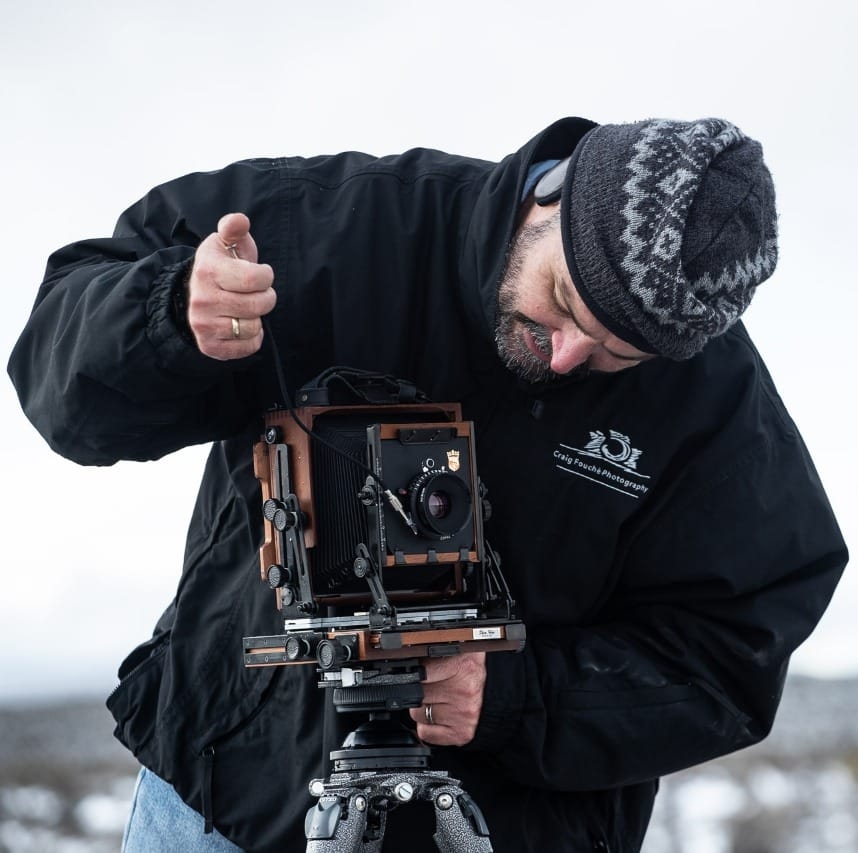
Craig Fouché, Rogge Cloof, Sutherland, South-Africa ©2020 Kirsten Frost Photography